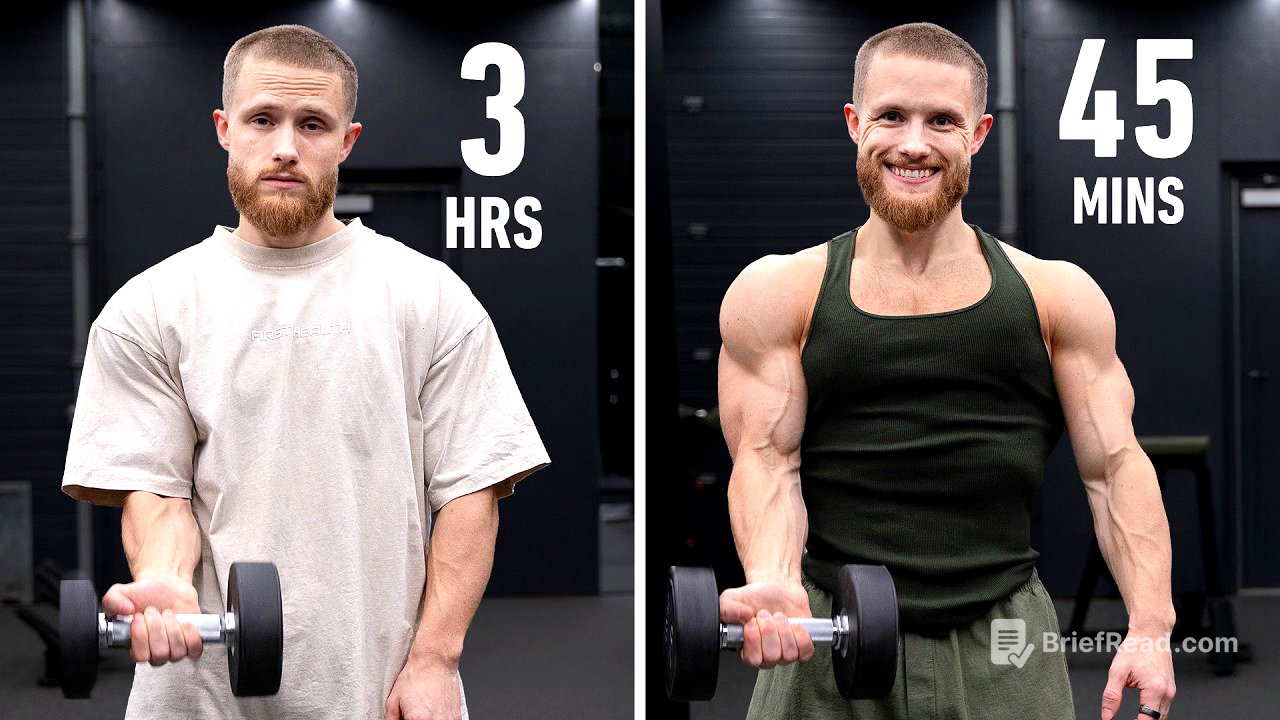TLDR;
Jeff Nippard details his 100-day experiment with low-volume training, contrasting it with the traditionally favored high-volume approach. He reviews the science behind both methodologies, addresses common criticisms of high-volume studies, and shares his personal results, including changes in body composition, strength levels, and overall workout satisfaction. He concludes that low-volume, high-intensity training can be effective, especially during a caloric deficit, and updates his previous stance on training volume during cutting phases.
- High volume training has been the standard for muscle growth, but recent studies and practical considerations suggest low volume can be effective, especially when cutting.
- The experiment involved reducing training volume to one or two sets per exercise, focusing on high intensity and training to failure.
- Results showed fat loss, maintenance of lean mass (with potential gains in the later phase), and strength improvements, alongside increased workout enjoyment.
Introduction [0:00]
Jeff Nippard introduces a 100-day experiment where he drastically reduced his training volume to assess the impact on his physique. He details his plan to cut his workouts in half, moving from the typical three to four sets per exercise to just one or two intense sets. The goal is to determine whether such a significant reduction in volume would lead to muscle loss.
Why I Always Did High Volume Training [0:20]
Jeff explains his long-standing preference for high-volume training, influenced by bodybuilding legends and scientific consensus. He defines "volume" as the total number of hard-working sets performed for a muscle each week, noting the standard science-based guideline of 10-20 sets per muscle per week. He illustrates the difference between high and low ends of this range with chest training examples, highlighting the time commitment required for high-volume routines. He contrasts this with his current, much lower volume approach of around six sets per muscle per week, split into an upper/lower body routine.
The Low Volume Challenge [7:30]
Jeff discusses his 100-day experiment with a low volume training approach. He tracked his chest and quad strength using a standardized protocol, monitored his physique with progress photos under consistent lighting conditions, and measured body fat and lean mass using DEXA scans. He followed an upper/lower split, performing only one to two sets per exercise, emphasizing high intensity and training to failure. Despite initial doubts, he observed that he maintained or even improved his physique, noting increased hardness, fullness, and vascularity.
The Low Volume Science [11:34]
Jeff reviews scientific literature on training volume, noting the consensus that higher volume leads to greater muscle growth, supported by meta-analyses from 2010, 2016 and 2023. He critiques the practical limitations of these studies, pointing out that they often focus on blasting one or two muscle groups rather than applying high volume to the entire body. He also raises concerns about the short-term nature of these studies (6-12 weeks) and their applicability to individuals in a caloric deficit, where recovery is compromised. He highlights studies indicating less volume is needed to maintain muscle than to build it, referencing research where subjects maintained gains with only one set per exercise per week after an initial high-volume phase. He also cites a recent study showing that even experienced trainees can make gains on a low-volume program, especially when training to failure.
My 100 Day Results [14:39]
Jeff presents the results of his 100-day low volume training experiment, showing before-and-after photos that demonstrate increased leanness and muscle definition. DEXA scans revealed a loss of 5.5 lbs of fat mass and 1.8 lbs of lean mass over the entire period, but from day 30 to day 100, he actually gained half a pound of lean mass while losing an additional 2.3 lbs of fat mass. He also reports strength gains, including new PRs on the pendulum squat and chest press machine. He updates his previous stance on training volume during cutting phases, now recommending low volume, high-intensity training due to reduced recovery capacity in a deficit.









